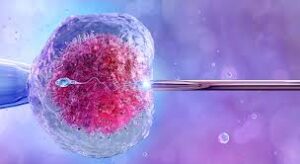
Understanding IVF: Breaking Down the Process
1. Initial Consultation and Evaluation
Embarking on the IVF journey begins with an initial consultation with a reproductive endocrinologist. During this crucial phase, medical history, previous fertility treatments, and any underlying health conditions are thoroughly assessed. Both partners may undergo tests to evaluate reproductive health, including hormone levels, semen analysis, and ovarian reserve testing.
2. Ovarian Stimulation
Once deemed suitable candidates for IVF, the female partner undergoes ovarian stimulation. This involves the administration of fertility medications to stimulate the ovaries to produce multiple eggs. Close monitoring through blood tests and ultrasounds ensures optimal follicular development.
3. Egg Retrieval
When the follicles reach the appropriate size, a minor surgical procedure known as egg retrieval is performed. Under sedation, a thin needle is guided through the vaginal wall to collect the mature eggs from the ovaries. The retrieved eggs are then transferred to the laboratory for fertilization.
4. Fertilization and Embryo Development
In the laboratory, the collected eggs are fertilized with sperm through conventional insemination or intracytoplasmic sperm injection (ICSI). The resulting embryos are closely monitored for development over the next few days, with the most viable ones selected for transfer.
5. Embryo Transfer
Typically, three to five days after fertilization, the selected embryos are transferred into the uterus. This procedure is performed in a clinical setting and is relatively quick and painless. Following the transfer, couples must wait anxiously for the outcome of the procedure.
IVF Success Rates: Setting Realistic Expectations
While IVF offers a promising solution for infertility, success rates are influenced by various factors. These include age, underlying causes of infertility, and treatment history. On average, success rates per IVF cycle typically range between 30% to 40%. However, younger women and those with healthier reproductive profiles tend to experience higher success rates. Understanding these factors is crucial for managing expectations and planning treatment strategies effectively.
Dr. Ankita’s Fertility Centre in Mumbai prides itself on our high IVF success rates. Our tailored approach, advanced techniques, and experienced team contribute to success rates that surpass the industry average. We strive to provide hope and achieve positive outcomes for every couple on their journey to parenthood.
Risks and Considerations
1. Multiple Births
One of the primary risks associated with IVF is the potential for multiple births. Primarily due to the transfer of multiple embryos to increase the chances of success. While twins or even triplets may bring double the joy. They also pose higher risks for both the mother and babies, including preterm birth and low birth weight.
2. Ovarian Hyperstimulation Syndrome (OHSS)
Ovarian hyperstimulation syndrome is a rare but serious complication of IVF. Characterized by the enlargement of the ovaries and fluid accumulation in the abdomen. Symptoms may range from mild abdominal discomfort to severe complications requiring hospitalization. Close monitoring during ovarian stimulation helps mitigate the risk of OHSS.
The Emotional Journey: Navigating the Ups and Downs
Beyond the medical procedures and statistics, undergoing IVF is an emotional rollercoaster for many couples. The journey is often fraught with feelings of hope, disappointment, anxiety, and resilience. From the initial excitement of starting treatment to the heartache of failed cycles, each step brings its own set of challenges and triumphs.
Conclusion: A Beacon of Hope
In vitro fertilization, amidst its challenges, stands as a beacon of hope for couples worldwide longing for parenthood. With advancing technology and ongoing research, reproductive medicine evolves, bringing new possibilities and renewed optimism. As couples begin their IVF journey, may they find solace in loved ones’ support, medical professionals’ guidance, and an enduring hope for a brighter tomorrow.
